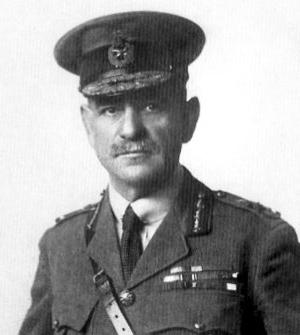John Monash

The son of Prussian immigrants, John Monash was born in Melbourne, Australia, on 27 June 1865.
After studying at Scotch College and the University of Melbourne, he worked as a civil engineer, notably on the construction of a bridge over the Yarra River.
At the same time, he joined the university company of the 4th battalion of the Victoria militia in 1884 then the metropolitan artillery brigade in 1887, a year when he became lieutenant. Ranking as captain in 1895, a major in 1897, by 1906 he was a lieutenant-colonel in the intelligence corps. At the eve of the First World War, promoted to the rank of colonel, he was appointed to command the 13th Infantry Brigade. In 1913 he published 100 Hints for Company Commanders, a basic military training document.
At the outbreak of war, Monash was appointed to command the 4th Infantry Brigade of the Australian Imperial Force, a brigade of the Australian and New Zealand Army Corps (ANZAC) stationed in Egypt. After the harsh fighting during the Gallipoli campaign where, between April and December 1915, the ANZAC troops suffered major losses, Major General Monash rejoined the western front in June 1916.
Taking command of the 3rd Division, he led his men to victory during the attack on Messines Ridge, in Belgium, on 7 June 1917, then during the third Battle of Ypres in Passchendaele (July-November). As Lieutenant-General, the successor to Birdwood at the command of the corps of the Australian troops in May 1918, he led the victorious offensive in July to tale back Le Hamel then took part in the operations around the Somme, where the German had positions at various points, including Saint-Quentin and Péronne.
After the armistice, as Director-General of Repatriation and Demobilisation, he organised the demobilisation and return of Australian troops. He himself returned to Australia in 1919 and, retired from the army, held various civil post including General Manager of the State Electricity Commission of Victoria.
He died on 8 October 1931, in Melbourne.
He was made Knight Commander of the Order of the Bath by King George V, on 12 August 1918.

